AIn honor of the birth anniversary of Ed Lowe, the inventor of cat litter, I’m sharing the history of the litter box. Lowe was borne July 10, 1920.
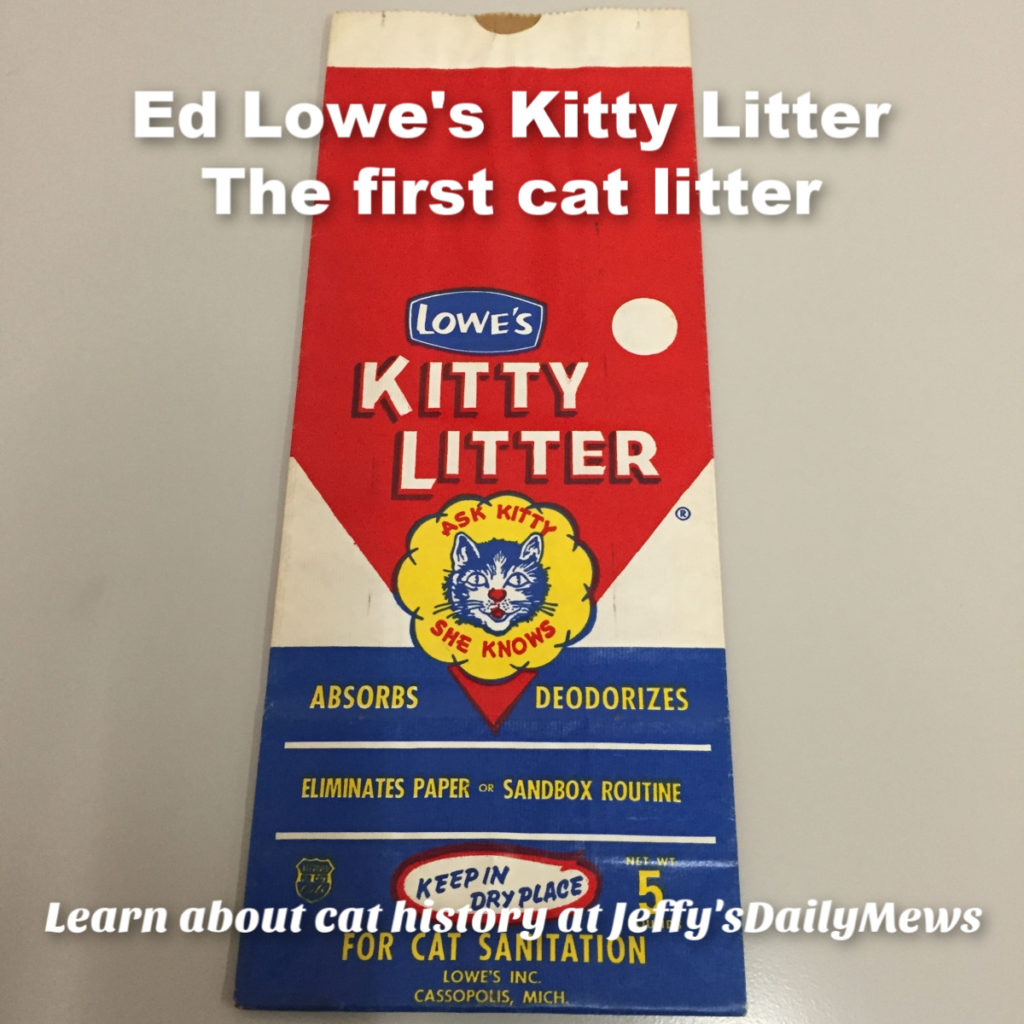
I know most of us grumble as we pick up the litter scoop and approach the cat box. What a pain in the tail! But we do it because we love our kitties, and cleaning the litter box is a necessity just like changing a diaper or washing the dishes.
No one really gives much thought to the impact that cat litter has had on our daily lives. Without it, our day would go very differently.
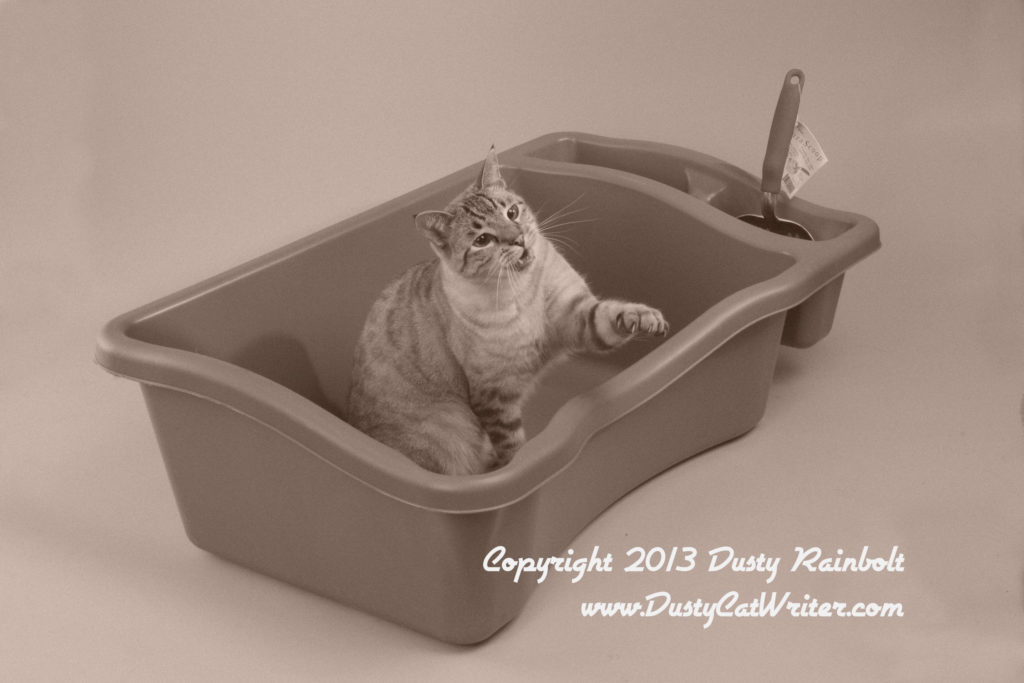
I learned how differently while researching my paranormal mystery, Death Under the Crescent Moon (Yard Dog Press, 2013). The story is set in 1939, almost a decade before the invention of KITTY LITTER®.
Have you ever thought about the Litter Box Process? I don’t mean the process involving the alimentary canal. I’m talking about custodial maintenance. Today’s clumping and silica gel litters allows us to simply scoop and toss. But our grandparents had to put a great deal of effort into keeping an inside cat.
According to Katherine Grier, Ph.D., professor of history at University of Delaware, most cats lived outside until after WWII. They did their business in backyards and neighbors’ flower beds. They lived separated from the people who loved them because of the elimination issue and also because few people altered them. (Intact kitties express themselves in ways not conducive with civilized indoor living.) But it’s a dog-eat-cat world, and increasingly, cat lovers wanted to keep their cats safely inside the home.
People couldn’t help but notice in a natural setting most cats relieved themselves in loose ground, then covered their waste. This tidy nature hid their presence from predators and protected them from disease and parasites. Unlike dogs, cats didn’t require housebreaking; they simply needed loose material.
People began providing inside kitties with “sanitary pans,” usually a 12” by 18” enamel baking pan or 22” by 4” deep galvanized iron roasting pan.
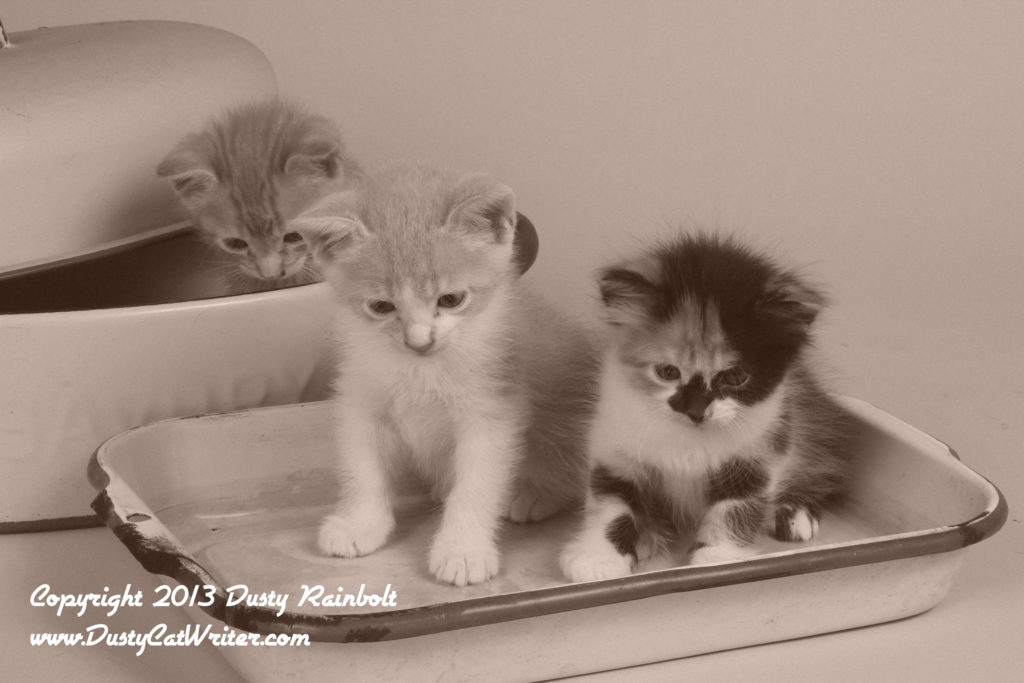
To these dedicated ailurophiles, the sand man had nothing to do with sweet dreams. His dump truck delivered a fresh supply of cat box sand. According to cat care books published between 1885 and the mid-1950s, inside cats might also find fireplace ashes, dirt, absorbent newspaper cat pads, shredded or folded newspaper, or sawdust in their pans. These books recommended changing and washing the sanitary pan twice daily, or once-a-day at the very least.
A commercial precursor to clay cat litter came from an innovator named “Poppy” George Plitt, who sold Kleen Kitty, a cat box filler made from wood ashes. Between changings, cat owners removed the poop with a kitchen frying strainer. Just as today we can tell cat lovers by the telltale cat hair on their clothes, in the 1940s you looked for soot. I imagine gray apparel was quite popular among cat fanatics.
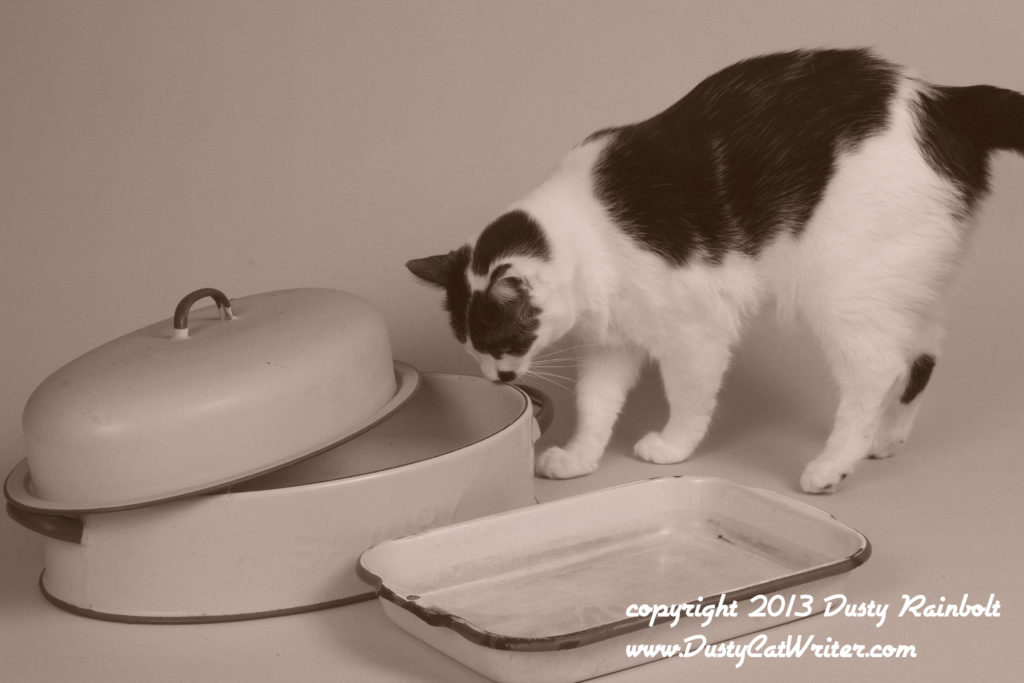
In January, 1947 Kay Draper, a cat lover from Cassopolis, Michigan, couldn’t reach her cat sand pile because of a deep layer of snow, so consequently her Angora cat was tracking sooty paw prints all over the house. She asked her neighbor, Ed Lowe (who sold sand and clay granules), if she could purchase some sand. Fortunately for cat lovers around the world the snow also prevented Lowe from accessing his sand reserves. He suggested she try Fuller’s Earth, kiln-dried clay granules he’d been attempting to sell to chicken farmers as nesting material.
Like a stray cat who found a full food bowl, Kay returned for refills and brought her cat lady friends with her. Lowe wondered if other cat owners would be as enthusiastic. To test the market, he filled 10 five-pound sacks with what he called KITTY LITTER™ and asked a local pet store to sell them for 69 cents a bag. The shop owner doubted his customers would pay that much. After all, in 1947 minimum wage was $0.43 per hour and a gallon of milk was $0.67. But within a few weeks the shop owner placed an order for more. By the early 1950s KITTY LITTER (which later became Tidy Cats™) became widely available in pet stores.
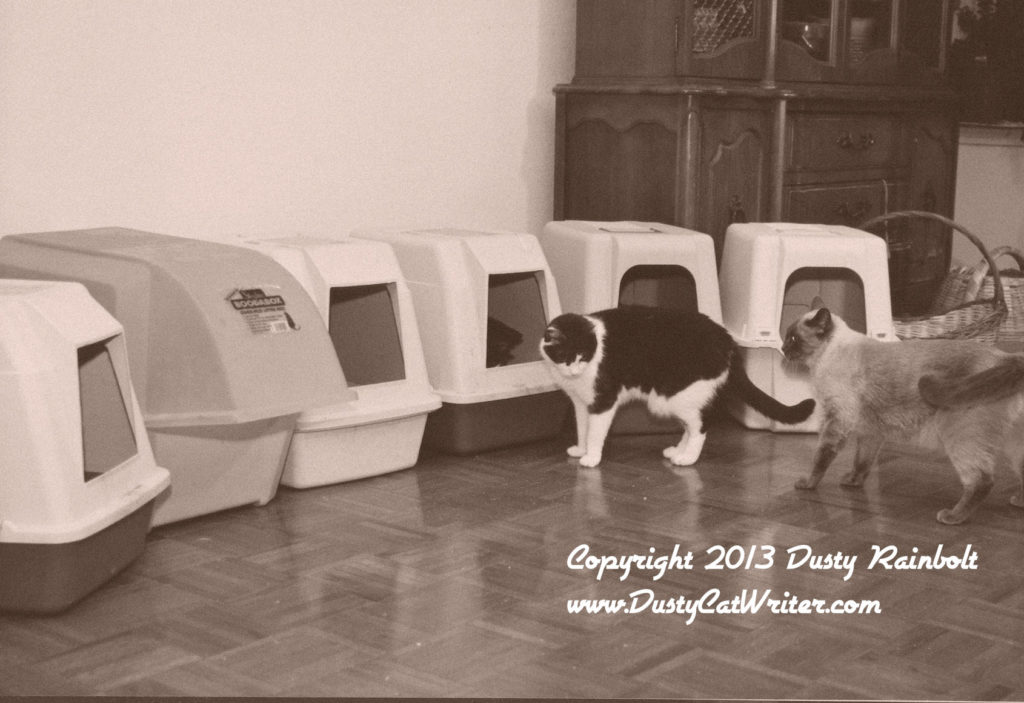
So what did cat care look like in the 1930s? In Death Under the Crescent Moon, Eva Dupree travels to a sanitarium with her cat, Ivan. Her maid, Rose, arrives at the clinic every day to bring Ivan minced chicken giblets and fresh ashes.
While a few brands of canned cat food were available in 1939, most people fed their cats table scraps and bread, and of course cream. (Imagine the smell of that litter box.) Despite the horrible diet provided by their people, I believe cats stayed healthy because they supplemented their diet with rodents.
What goes in must come out. In order to tend to the cat’s bathroom, every day Rose must collect cooled cinders from the fireplace, dispose of mushy used ashes, wash the enamel baking pan, dry it thoroughly and refill it. Of course, where there’s soot, there’s grime. As Ivan exits his sanitary pan he deposits dark paw prints all over the white bathroom tile floor. Daily mopping is just one more step in the process. Ash residue also migrates to the carpet and bed linens. Keeping an inside cat was truly a labor of love.
In the book Rose reveals that she learned about cat care from a real book, A Practical Cat Book for Amateurs and Professionals(Charles Scribner’s Sons, New York, 1939), written by a particularly enlightened biologist of the day, Ida Mellen. Mellen, it turns out, gave me peek into the past while she kept her eyes firmly on the feline future. Mellen encouraged keeping cat indoors, altering pets, going to a humane vet who uses anesthesia for surgery and even gives instructions on how to leash train a cat—trailblazing for 1939.
I have to admit it was fun and sometimes horrifying to look into cat care practices of the past. It certainly makes me grateful for my massive polypropylene litter boxes and my efficient Litter-Lifter scoop and especially my odor-controlling Dr. Elsey’s Cat Attract Litter. I will never take the litter box for granted again.
So next time you feel tempted to complain about litter box duty, think about those cat-loving pioneers who made your life more convenient and the air in your home more pleasant. I doubt that the task at hand will seem quite as bad.












Recent Comments